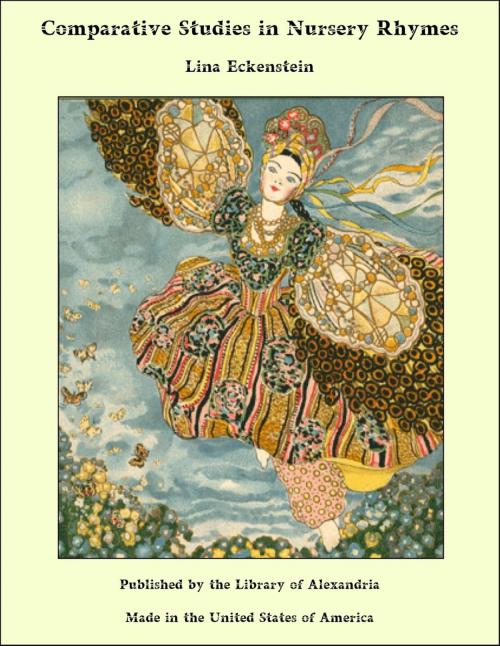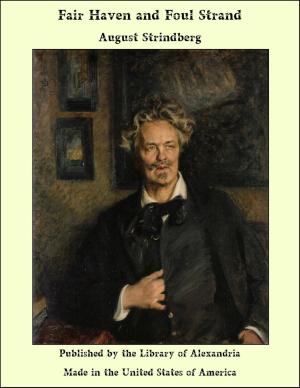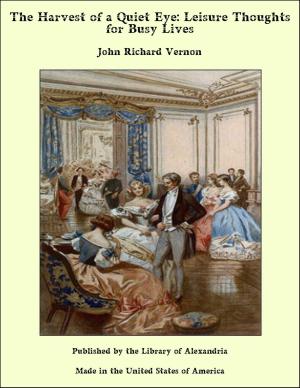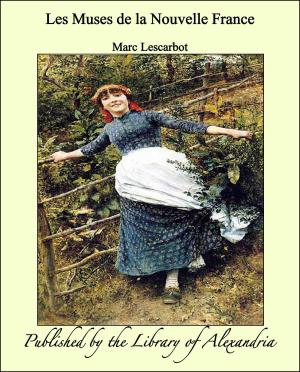Comparative Studies in Nursery Rhymes
Nonfiction, Religion & Spirituality, New Age, History, Fiction & Literature| Author: | Lina Eckenstein | ISBN: | 9781465605139 |
| Publisher: | Library of Alexandria | Publication: | March 8, 2015 |
| Imprint: | Language: | English |
| Author: | Lina Eckenstein |
| ISBN: | 9781465605139 |
| Publisher: | Library of Alexandria |
| Publication: | March 8, 2015 |
| Imprint: | |
| Language: | English |
THE study of folk-lore has given a new interest to much that seemed insignificant and trivial. Among the unheeded possessions of the past that have gained a fresh value are nursery rhymes. A nursery rhyme I take to be a rhyme that was passed on by word of mouth and taught to children before it was set down in writing and put into print. The use of the term in this application goes back to the early part of the nineteenth century. In 1834 John Gawler, afterwards Bellenden Ker, published the first volume of his Essay on the Archaiology of Popular English Phrases and Nursery Rhymes, a fanciful production. Prior to this time nursery rhymes were usually spoken of as nursery songs. The interest in these "unappreciated trifles of the nursery," as Rimbault called them, was aroused towards the close of the eighteenth century. In a letter which Joseph Ritson wrote to his little nephew, he mentioned the collection of rhymes known as Mother Goose's Melody, and assured him that he also would set about collecting rhymes. His collection of rhymes is said, in the Dictionary of National Biography, to have been published at Stockton in 1783 under the title Gammer Gurton's Garland. A copy of an anonymous collection of rhymes published by Christopher and Jennett at Stockton, which is called Gammer Gurton's Garland or the Nursery Parnassus, is now at the British Museum, and is designated as a "new edition with additions." It bears no name and no date, but its contents, which consist of over seventy rhymes, agree with parts 1 and 2 of a large collection of nursery rhymes, including over one hundred and forty pieces, which were published in 1810 by the publisher R. Triphook, of 37 St. James Street, London, who also issued other collections made by Ritson. The collection of rhymes known as Mother Goose's Melody, which aroused the interest of Ritson, was probably the toy-book which was entered for copyright in London on 28 December, 1780. Its title was Mother Goose's Melody or Sonnets for the Cradle, and it was entered by John Carnan, the stepson of the famous publisher John Newbery, who had succeeded to the business in partnership with Francis Newbery. Of this book no copy is known to exist. Toy-books, owing to the careless way in which they are handled, are amongst the most perishable literature. Many toy-books are known to have been issued in hundreds of copies, yet of some of these not a single copy can now be traced.
THE study of folk-lore has given a new interest to much that seemed insignificant and trivial. Among the unheeded possessions of the past that have gained a fresh value are nursery rhymes. A nursery rhyme I take to be a rhyme that was passed on by word of mouth and taught to children before it was set down in writing and put into print. The use of the term in this application goes back to the early part of the nineteenth century. In 1834 John Gawler, afterwards Bellenden Ker, published the first volume of his Essay on the Archaiology of Popular English Phrases and Nursery Rhymes, a fanciful production. Prior to this time nursery rhymes were usually spoken of as nursery songs. The interest in these "unappreciated trifles of the nursery," as Rimbault called them, was aroused towards the close of the eighteenth century. In a letter which Joseph Ritson wrote to his little nephew, he mentioned the collection of rhymes known as Mother Goose's Melody, and assured him that he also would set about collecting rhymes. His collection of rhymes is said, in the Dictionary of National Biography, to have been published at Stockton in 1783 under the title Gammer Gurton's Garland. A copy of an anonymous collection of rhymes published by Christopher and Jennett at Stockton, which is called Gammer Gurton's Garland or the Nursery Parnassus, is now at the British Museum, and is designated as a "new edition with additions." It bears no name and no date, but its contents, which consist of over seventy rhymes, agree with parts 1 and 2 of a large collection of nursery rhymes, including over one hundred and forty pieces, which were published in 1810 by the publisher R. Triphook, of 37 St. James Street, London, who also issued other collections made by Ritson. The collection of rhymes known as Mother Goose's Melody, which aroused the interest of Ritson, was probably the toy-book which was entered for copyright in London on 28 December, 1780. Its title was Mother Goose's Melody or Sonnets for the Cradle, and it was entered by John Carnan, the stepson of the famous publisher John Newbery, who had succeeded to the business in partnership with Francis Newbery. Of this book no copy is known to exist. Toy-books, owing to the careless way in which they are handled, are amongst the most perishable literature. Many toy-books are known to have been issued in hundreds of copies, yet of some of these not a single copy can now be traced.















